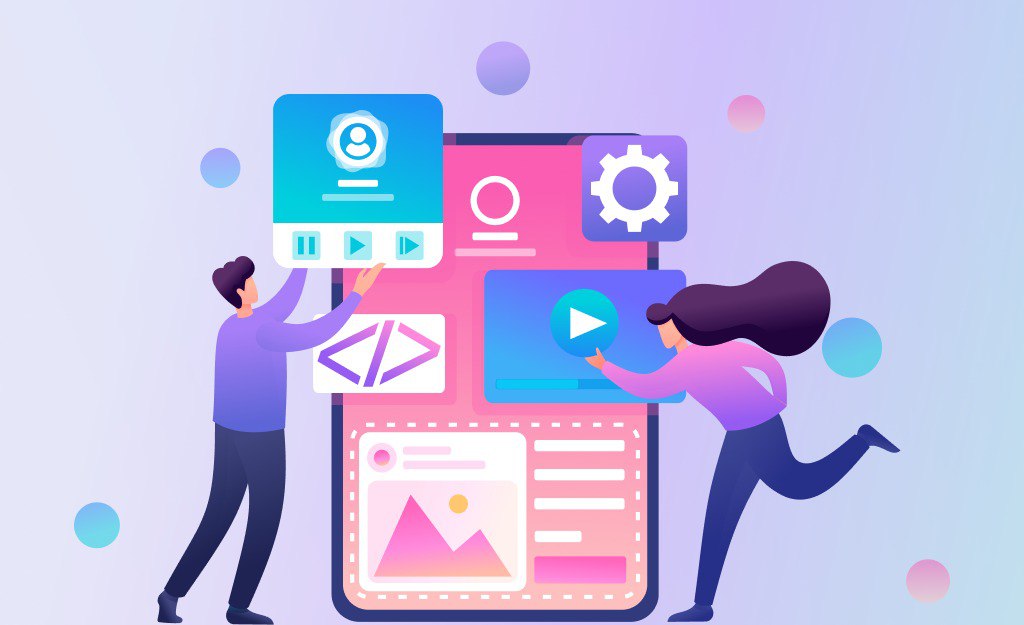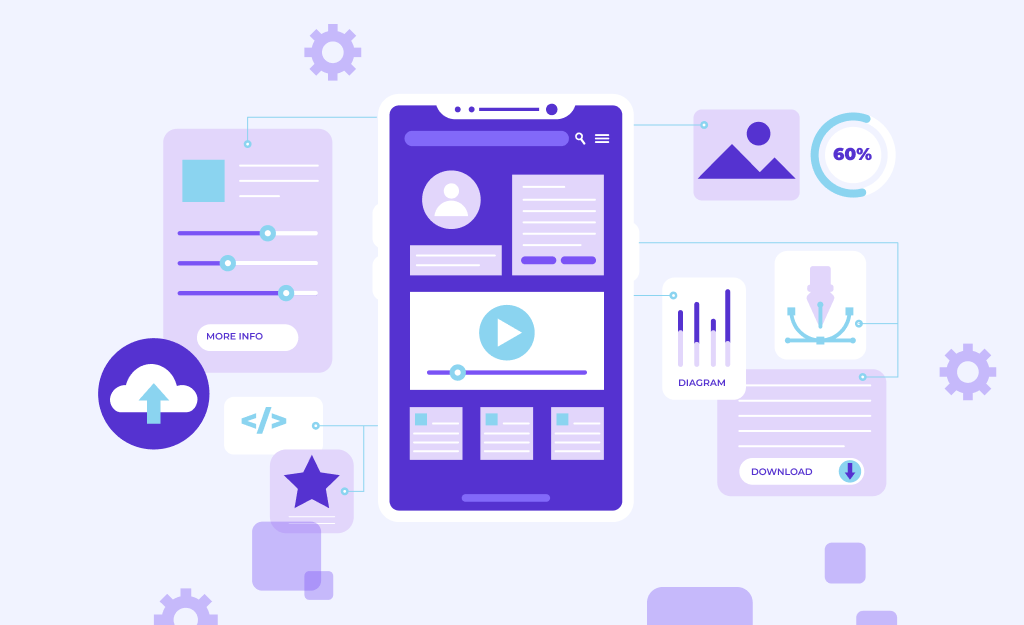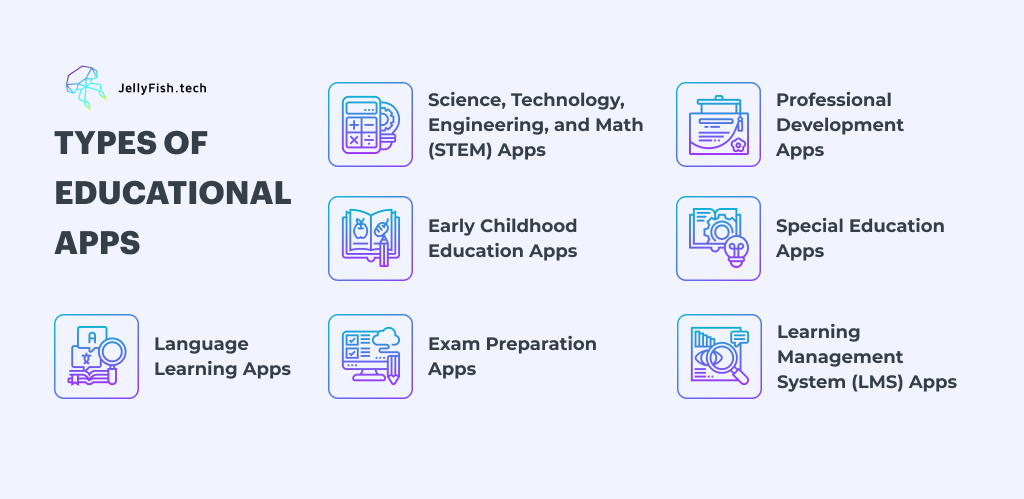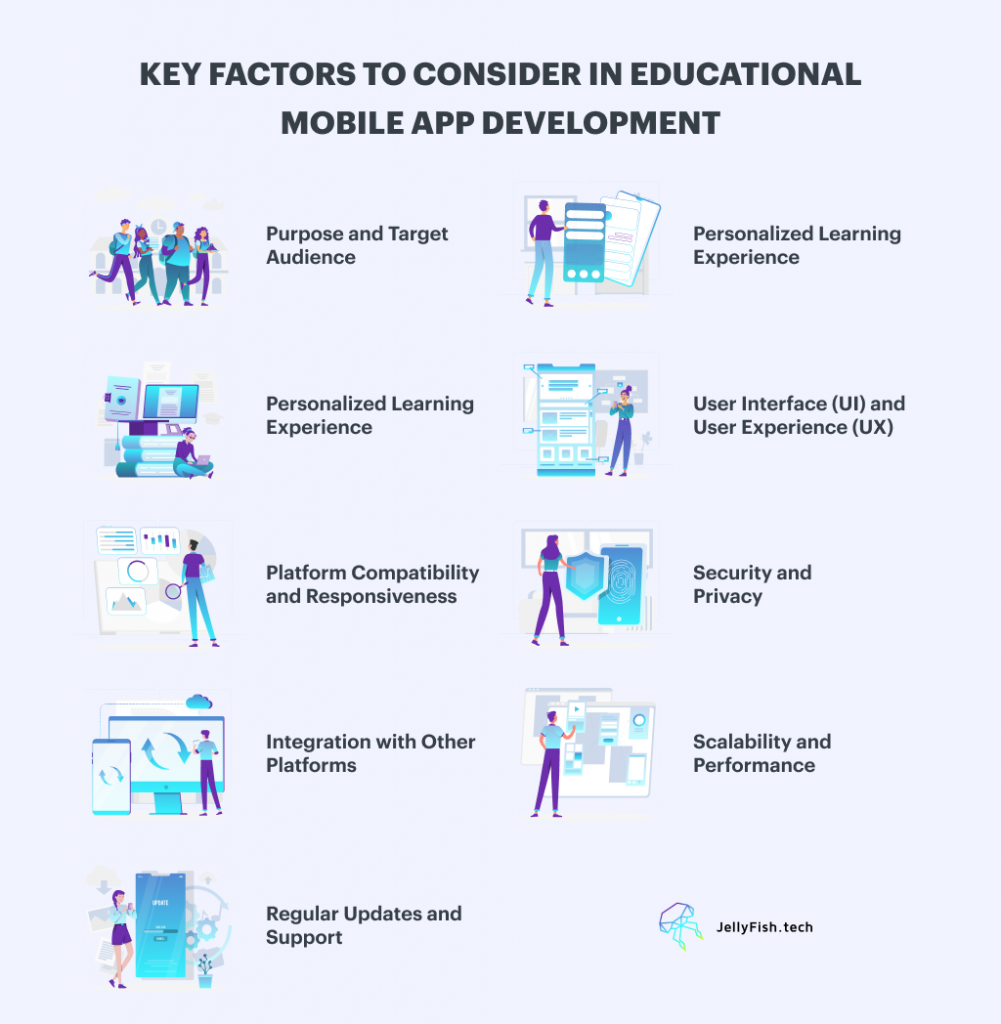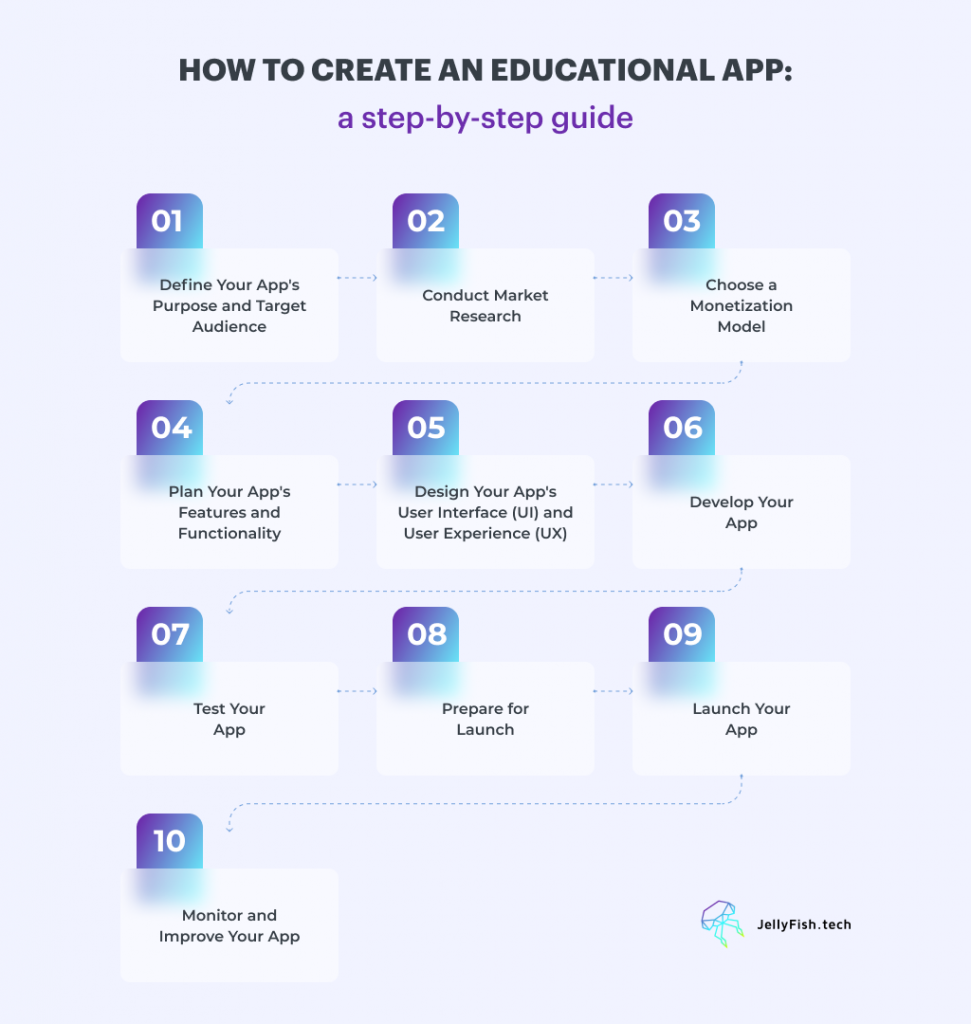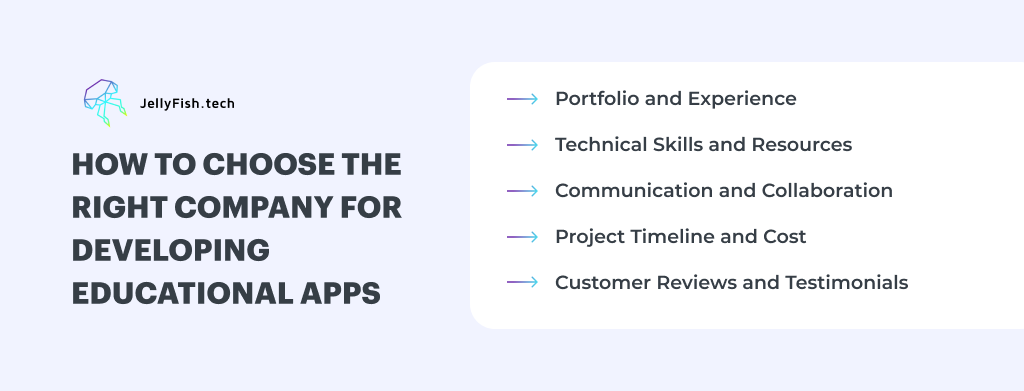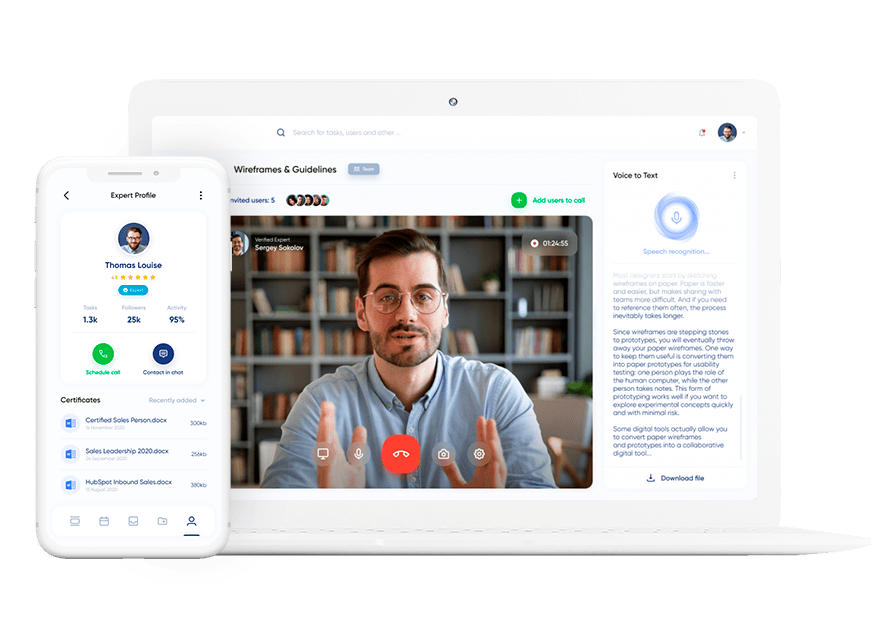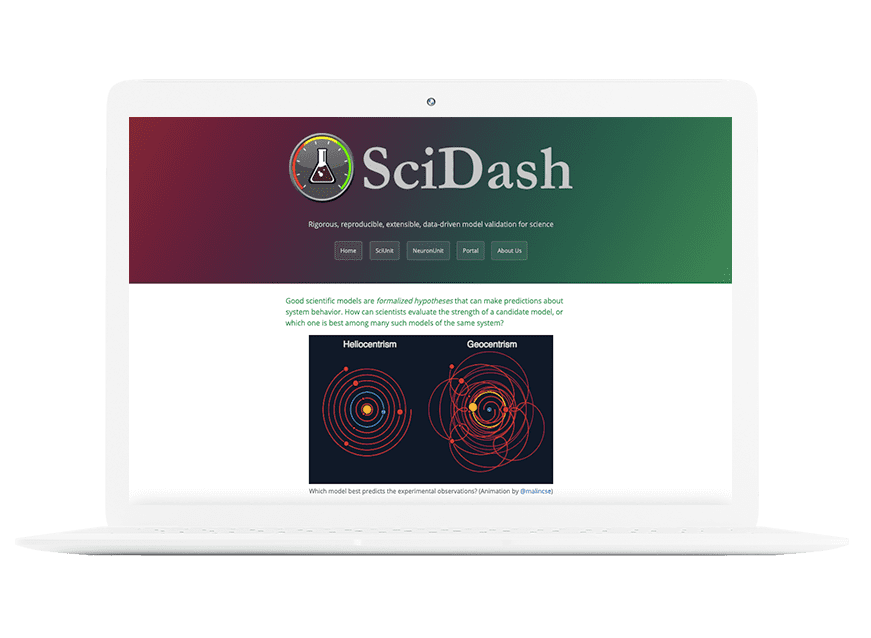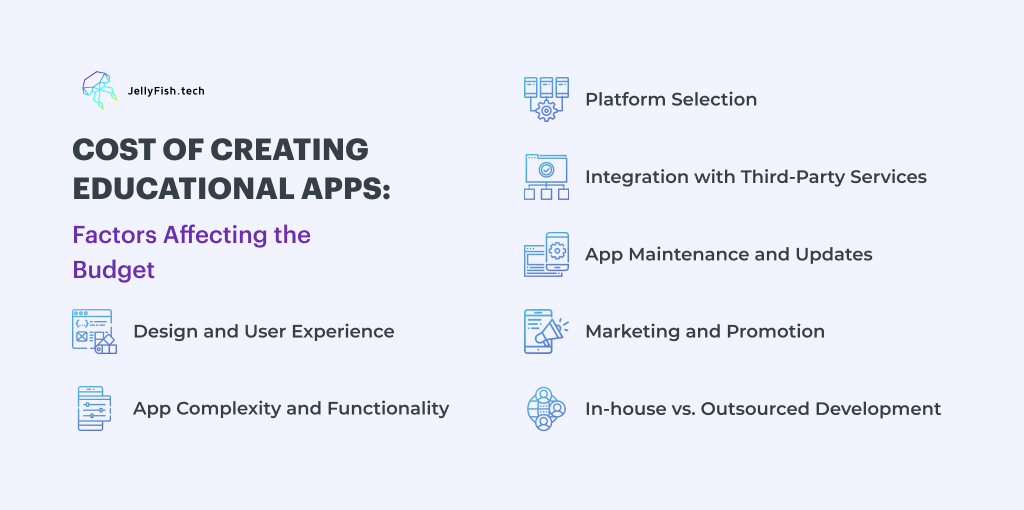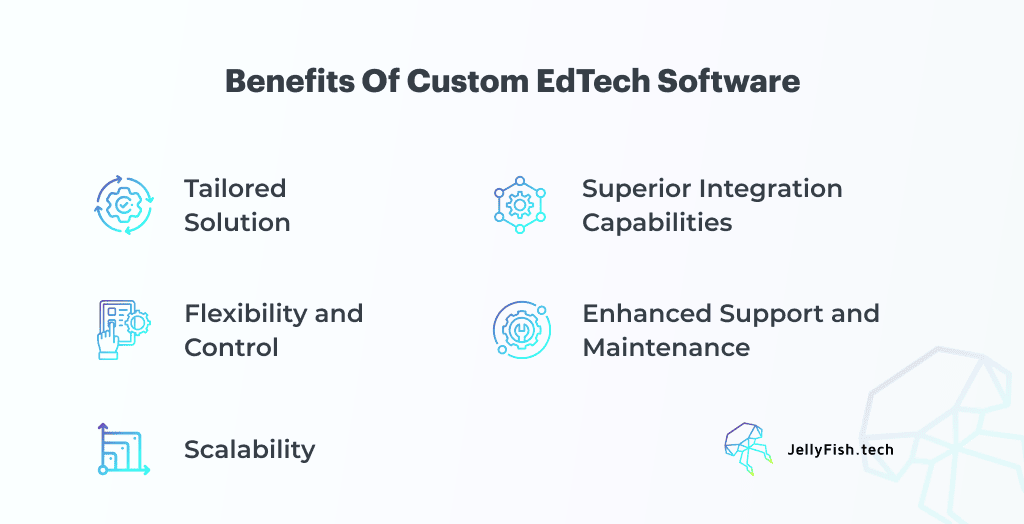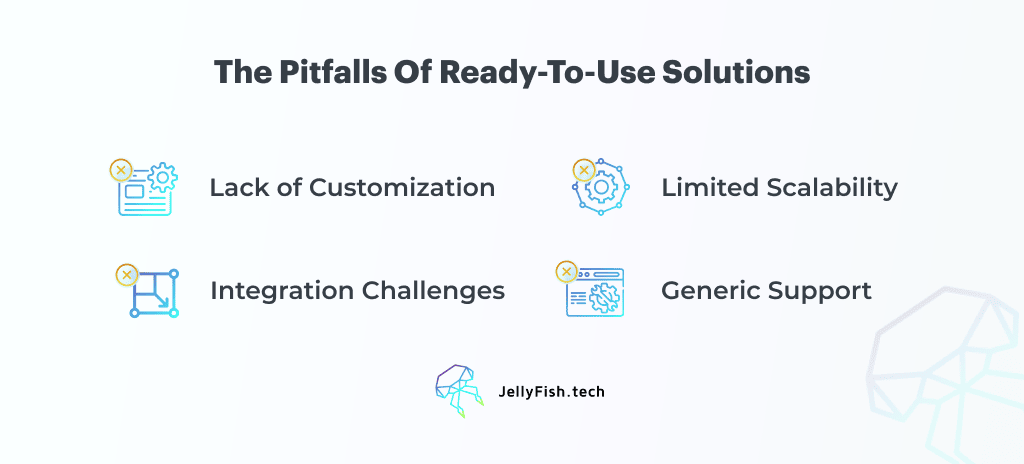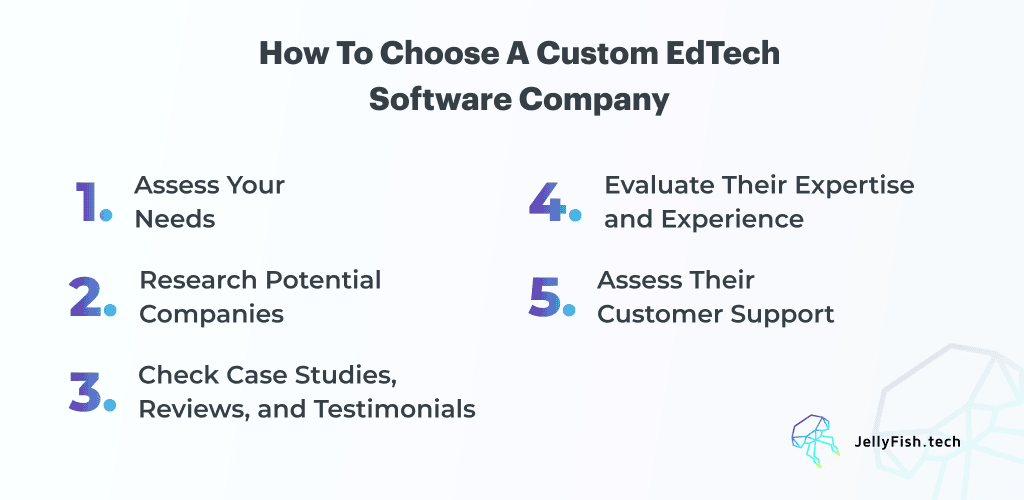
How to Choose The Right Education App Development Company
The edtech development industry is booming, with new learning tools being created every day. Currently, the market for educational apps is expanding rapidly and is projected to grow even more in the future:
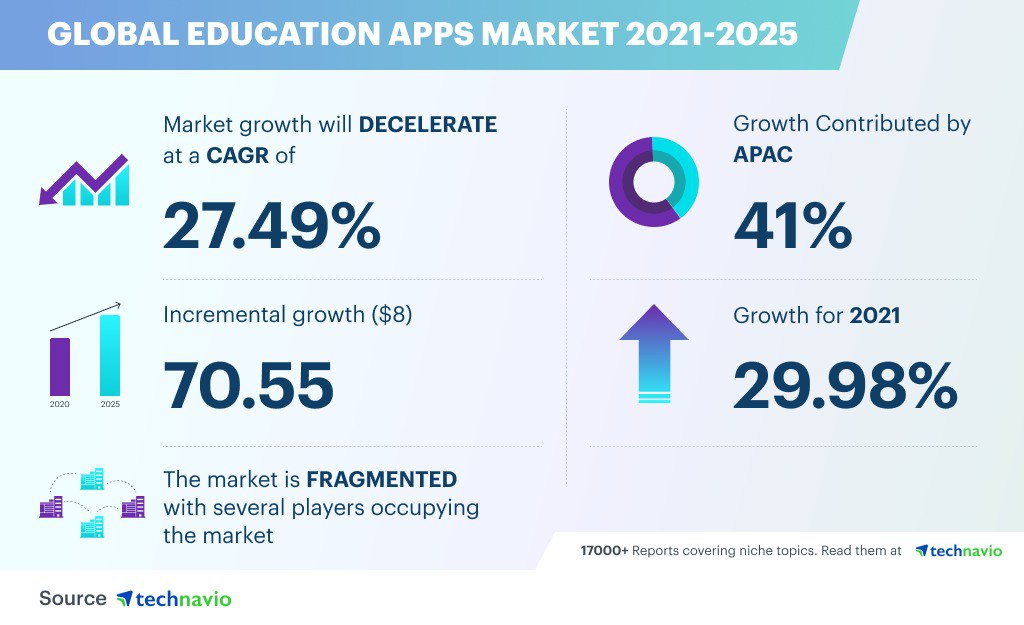
Mobile app developers have been creating new solutions to help businesses solve their problems, while also making the lives of consumers easier than ever before. In fact, there are over 5 billion active mobile devices worldwide and this number is expected to grow in the years ahead. Hence, it’s no wonder that almost every industry today has an array of specifically designed apps. According to Statista, in the second quarter of 2022, educational apps accounted for the second-largest share of all apps available in Google Play.
However, as with any technology or service-based business, there are risks associated with choosing an inexperienced partner who may not deliver your product on time or within budget. To ensure that your educational app is delivered successfully and within budget, it’s important to choose an experienced company that has proven its ability in this field.
In this article, we will go through the aspects you should pay attention to when selecting a development partner for your project.
The right vendor is a crucial part of software development
The importance of choosing the right software development company can’t be overstated — because it’s not just about finding someone who can write code; it’s about finding someone who understands your business and your needs.
Software suppliers have varying strengths, weaknesses, and problem-solving strategies. Therefore, when you choose a vendor, you choose a particular method of operation.
Although it may seem unlikely that you will discover someone who is both skilled and ready to do things your way, you may be fortunate enough to find someone who is both competent and adaptable enough to meet your demands. As per statistics, 78% of organizations have positive relationships with their outsourcing partners.
Overall, selecting a reliable vendor requires two distinct skill sets:
- You need to be able to evaluate the competence of potential vendors as objectively as possible. This means understanding how their results are measured in the marketplace, how they think about problems, what kind of staff they hire, etc. The best way to get this information is by talking with other customers and reading customer testimonials on their website.
- You must determine the type of relationship you desire with your vendor over time. This entails understanding the type of support services (technical and otherwise) you require, the level of customization you expect, the degree of flexibility regarding technology choices/approaches/methodologies, etc., and the training alternatives accessible for your team members.
By adhering to these two principles, you will be able to take the initial steps toward selecting the optimal development partner and the most suitable collaboration model for your purposes. The next step is to examine the variables that have a role in selecting the best provider.

Searching for a development partner?
👉 Contact us to discuss how we can help your business!
Things to consider when selecting your edtech development partner
It can be quite challenging to select the best edtech software development company from the many available. Because of this, preliminary study is obligatory. Consider these factors while vetting potential companies to create your new educational software:
Experience
To provide accurate outcomes, a development company needs to have extensive experience. An experienced edtech development company will be able to anticipate your needs and deliver optimal solutions.
That’s especially the case if you need a solution that integrates with your current infrastructure and platforms.
Pricing
It is essential to select a company that charges reasonable prices for its edtech development services. You don’t have to overspend on unnecessary features or end up being stuck with a project that is too expensive to manage.
Before making a final decision, you should obtain quotes from at least three providers due to the expensive nature of app development. You must also examine whether or not your budget is sufficient to cover the things you desire. If you require something unique, the price could increase significantly.
Quality of customer service
The vendor you hire to provide the software for your company should have outstanding communication and customer service skills. They should be able to assist you in resolving issues related to your course or product in a timely manner.
There will inevitably be some sort of technical issue that needs to be fixed during the course of app development with an e-learning provider. It’s crucial that they have a competent support staff on hand to deal with any problems that may arise.
Scalability
It is essential to consider scalability while constructing an education platform. If your educational course cannot accommodate the projected amount of users, it will result in a negative user experience for everyone. This is especially true during peak times, such as enrollment periods or finals week.
It’s also important to look at how many courses an education platform can handle at once, as well as how many students can be enrolled in each course.
Make sure the edtech software development company you select can handle large projects without complication or delay. You don’t want your courses bogging down the entirety of their system due to excessive demands from users.
Security
A reputable educational app development agency recognizes that security is one of the most crucial aspects of app development. In fact, they will ensure that your application has all of the capabilities required to keep your data secure at all times. They will also be able to provide you with guidance on how to safeguard your data even if someone attempts to hack into it or steal information from it.
In conclusion, selecting the ideal app development agency can be challenging. Numerous aspects must be considered, including experience, knowledge, and portfolio. Before making a decision, make sure to conduct extensive research and speak with multiple companies.
Top 10 custom edtech software companies
When it comes to app development, there is no way of getting one that does not have any flaws. However, there are some companies whose services are renowned for their excellence and who are constantly listed among the best agencies to hire. Each one of these companies has been in the game for several years and has managed to acquire a name in the industry which means they know what they are doing.
Here is our list of the top 10 app development companies that you may wish to try out first when building your educational application:
1. Kanda Software
Kanda is a custom software product development company with a sterling reputation for quality, speed, and client IP security for over 25 years.
2. Miquido
Miquido is a full-service software solution provider that employs cutting-edge technology and data-driven research to address business challenges.
3. Bilberrry
When it comes to digital products, Bilberrry is the go-to company for design and development that aids clients in expanding their businesses and adapting to new environments.
4. Exoft
Exoft has extensive experience in meeting the needs of businesses through its software development services.
5. Exaud
Exaud is a well-established software development and technical consulting company that offers customized software solutions.
6. Matellio Inc
As a global provider of software and mobile app solutions, Matellio collaborates with clients to streamline and digitalize key aspects of their businesses using cutting-edge technology.
7. BairesDev
BairesDev is a software development company that offers organizations of all sizes with staff augmentation services and managed software teams to assume full software project responsibilities.
8. Rootstrap
Rootstrap is a full-service custom design and development shop specializing in responsive web/mobile solutions and custom applications.
9. Orangesoft
Orangesoft is a full-cycle software development company delivering highly productive and cost-effective solutions across multiple domains.
10. Jellyfish.tech
Jellyfish.tech is a full-service mobile app development company that provides custom solutions for any business at an affordable price. We also specialize in creating educational apps for the education industry.

Reasons to choose edtech app development services by Jellyfish.tech
Here at Jellyfish.tech, we’re able to complete projects thanks to the combined efforts of many professionals with specialized skills. Some of our main skillsets include:
5+ years of experience in developing educational apps & software
We have been developing mobile apps for more than five years now — and gained expertise in multiple industries, including retail, education, healthcare, and science. For this reason, we welcome the opportunity to take on projects of any size or complexity.
Our experts are passionate about building great products that solve your problems. We also appreciate that every customer has unique preferences and needs, thus we strive to tailor our services to each specific situation.
You can check out our relevant cases for the testimonial of the skill and dedication we provide to our projects.
Proven track record of success
We have a history of delivering high-quality projects thanks to our expert team of developers, designers, and project managers. Through our global network of clients, we’ve been able to create some truly groundbreaking mobile applications.
Our company has been around for more than five years and over the years, we’ve worked on projects for many large companies. We’ve also collaborated with dozens of startups, helping them achieve their goals with our custom web and mobile development services.
Timely project completion with no delays or hold-ups
We have a track record of completing projects on schedule and within budget, and we never sacrifice quality for speed.
You can rest confident that we will follow best practices in project management and that your project will be completed on time because our approach is based on the PMI standard set out by the Project Management Institute.
Microsoft Project, Primavera P6, and Atlassian Jira are only a few of the common software applications we employ in our project management and planning processes.
Team of highly skilled developers
Our team of experts is capable of handling large-scale projects under strict timelines. We have been working with different clients and have successfully delivered them within their expectations. Jellyfish.tech team also has rich experience in managing complex projects that require collaboration between multiple teams.
As an example of successful educational product development, we may point to an edtech marketplace that connects learners and experts. This project focuses on making e-learning as straightforward as possible, with an intuitive design and all the necessary tools. The delivered marketplace is a platform where experts can offer tutoring services in exchange for payment, and students can quickly and easily set up a video chat or phone conversation with a teacher.
Use of the right tools and frameworks
We use the latest technologies in our development process.
We believe that using the latest technologies allows us to create better and more efficient products. Not only do we use the most up-to-date tools and software, but we also adhere to best practices when it comes to project management and design. This ensures that our products are high quality, on time, and budget compliant.
Our team of experts uses their expertise and creativity to deliver customized solutions that meet your specific requirements.
When you choose us as your education app development partner, you can also expect:
- A dedicated team that works closely with you throughout the entire project lifecycle – from initial consultation through design, testing and delivery;
- An expert walkthrough of your requirements;
- A custom-built solution based on your specific needs;
- A committed project manager who will keep track of all activities throughout the project;
- Constant communication between you and our team members.

💡 Having an idea for an edtech app? Contact our team!
Features to include in your educational app
When creating apps, we apply our extensive knowledge, and expertise and implement top-notch e-learning features:
Video conferences are a great way to connect with people from all over the world. However, if you want to give your video conference a more personal touch, you can do so by adding voice-to-text transcription. With this feature, your participants will be able to see what is being said in the video conference and read it on their own time.
Gamification is an excellent way of making things more engaging and fun. It can also be used as a motivational tool for workers that need an extra push to complete their tasks. Gamification has been proven to improve performance levels in many cases and it’s no different when it comes to video conferences with voice-to-text transcription.
Data visualization dashboards are great to present data in an interactive and engaging way. They can be used to visualize the data that is collected from different sources and provide insights into how the data changes over time.
The best part of using data visualization dashboards is that they can be customized according to your needs. You can choose the type of graph, color scheme, and other features like animations or interactions with the graphs.
Data visualization dashboards are becoming more popular in educational app development because they help learners understand concepts better by providing them with visual representations of the information.
The recent trend in mobile learning is bite-sized learning, which is short and concise content designed to be consumed quickly. Bite-sized content can be used by educators to provide supplementary material or it can be used by students as an additional resource for their classes.
Task trackers are a great way to make sure that the development of an educational app is on the right track. They can also be used as a tool for students to manage their time and stay on top of their workload.
The task tracker helps students and professors by making them aware of what needs to be done at any given time. It also helps them create deadlines that they can meet, which will in turn make their work more efficient.
In-built messaging, chats and chatbots are playing a major role in the development of educational apps. They provide a platform where students can interact with each other and teachers to get instant feedback on their assignments or answer any doubts they have.
Plugins and add-ons are a great way to make educational applications more user-friendly. They are also an easy way to make the app more customizable and functional.
Plugins and add-ons can be used for various purposes in educational apps. They can be used for saving data, accessing content, adding features, etc. Some plugins are even used for integrating other apps into the application.
Integration is also an important part of the educational app development process. There are many different types of integrations that can be used to make the app more effective and efficient.
One type of integration is with social media networks such as Facebook, Twitter, Google Plus, and LinkedIn. This allows for a better user experience as well as a platform for advertisements.
The second type of integration is with Outlook products such as Microsoft Outlook, Microsoft Office 365, and Microsoft Exchange Server which allow for syncing between devices and organizational tools.
The third type of integration is with Google products such as Google Drive, Gmail, and Google Calendar which allow for data storage on the cloud and access to these tools on any device.
Find out more about the use of web and mobile applications in e-learning.
Our education app development process: five key stages
We at Jellyfish.tech have a very systematic process for edtech product development. Our team is made up of experts in the industry and they follow a step-by-step process to make sure that the app development is done efficiently.
Our typical education app development process includes five essential steps:
1. Requirement analysis
The first step in the development process is to understand your requirements and needs. We will work with you to make sure you get the maximum value without compromising on the cost or quality of the product. The following questions will help us define the problem:
- What are your goals?
- What is your budget?
- Who is your target audience?
- Who will use this app, both teachers and students, or just one side?
- How much content do you need to create for this app (texts, videos)?
2. Market research
One of the most important aspects of an educational app development project is market research. Before we start working on your app, our team performs in-depth research to understand the needs and requirements of your institution. This helps us craft a product that will create value for you and your students.
We also study what other apps are doing right and wrong, so when it comes time to launch our own app, we know exactly how to differentiate ourselves from the competition. If there are any gaps in their offerings or areas where they could improve upon their existing solutions, we aim to fill them with ours!
3. UI/UX design
While it’s not the most important consideration, UI/UX design is an integral part of the app development process. It is the process of designing interfaces and interactions that provide the best possible experience for users. In other words, it’s making sure your app looks and feels good.
While this may seem like a simple task, there are many aspects to consider when designing an app interface: user interaction flow, color scheme/branding, etc. However, what makes UI/UX design different from other types of software development is its combination of artistry with science. You need to have a solid understanding of how people interact with technology in order to create a great user experience — but at the same time, your creativity needs room to flourish so you can express yourself through your designs.
We start this process by first defining our goals based on feedback from stakeholders or current users (if available). Next, we conduct research looking at competitors’ apps or similar products which have been successful in terms of usability or style; then we brainstorm ideas internally before presenting them back with mockups as well as prototypes. Finally, we present prototypes based on these ideas until everyone agrees upon something great.
4. Development & testing
Once the app has been created, it needs to be tested and then further tested for bugs. This process can take anywhere from days to weeks depending on the size of the team and how complicated the app is. Below are some steps in this process:
- Code is written by developers and then checked by another member who ensures that it’s been written properly;
- Bugs are fixed if any exist;
- The code is then tested again.
Without testing, the app may have errors or features that negatively affect users. Furthermore, without adequate code testing, the app may become faulty and difficult to maintain in the long run.
5. Delivery
The final component of the development process is to launch your educational app and deliver it to your customers. The application app development delivery phase comes when the app is commercially ready and can be distributed to customers.
During this period, a slew of factors come together to create an optimal user experience. Our objective is not just to deliver the applications onto the users’ devices, but also to ensure that they can properly utilize them and find any necessary support materials or tutorials.
It is essential to keep in mind that this procedure is not static; changes will occur throughout the rollout as feedback from customers or internal testers reveals where improvements are required. However, our well-planned approach always helps to minimize disruptions and maximize the project’s overall success.

Want to hire experienced educational app developers? 🚀
👉 Book a consultation with our experts
How much does it cost to make an educational app?
The answer to this question depends on a number of factors, including the nature and complexity of the app. However, there are some general guidelines that can help you decide whether the cost is worth it or not.
The average cost of educational app development varies from $10,000 to $50,000 on average, depending on the features and functionality you want in your app. The higher end of this range is for complex apps with many features and functions; at the low end of the range are simpler applications that provide basic information to students and parents.
The following factors will influence how much your educational app will cost:
- How complex is your idea? Your idea could be simple or complex, depending on what kind of functionality you want your app to offer. If your idea requires extensive research and development work, it will cost more than if it’s a straightforward concept that doesn’t require much effort to execute.
- What kind of functionality do you want? Do you want users to be able to search through databases with their mobile devices? Do you want them to be able to communicate via chat rooms or instant messaging? Do they need access to videos and audio recordings? All these features add up when determining how much an educational application will cost.
Wrapping up
In a world where mobile apps are growing in popularity and importance, it’s crucial to partner with an education app development company that can meet your needs. The right agency will help you develop a strategy that aligns with your overall business goals, while also delivering quality edtech products.
Overall, the education app development company you choose should have a proven track record in delivering high-quality apps, as well as the expertise necessary to develop and support your product.
From experience and expertise to cost-effective solutions, our edtech development services have something that will fit your needs perfectly. So if you’re looking for an app development company that you can trust, look no further — Jellyfish.tech is exactly what you need.
We’re here to help you build the perfect educational app. Our experts can create a unique and engaging learning experience that meets your users’ needs and exceeds their expectations. Get in touch with us today to get started.


